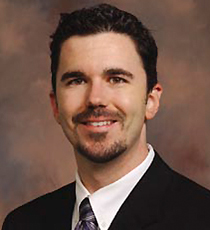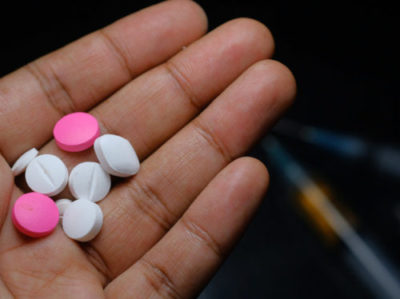By Drs. Douglas Blackmon and David Paine
Over the past few months, the COVID-19 pandemic has ravaged the world, our country, and our home state of Georgia. The novel coronavirus has tragically claimed thousands of lives and has garnered unprecedented attention from our leaders.
But we can’t afford to lose sight of the other epidemic that has been robbing people of their family members and friends for years: opioid overdose. In 2018 alone, 866 Georgians lost their lives to overdose and many more continue to struggle with addiction and substance use disorders. According to pre-pandemic statistics from the CDC, more than 130 Americans die each day from an opioid overdose.
Stay-at-home orders — while absolutely necessary to contain the spread of COVID-19 — have also likely exacerbated the crisis by limiting access to treatment for those in need. Sadly, overdoses appear to be spiking dramatically across the United States and in Georgia.

Policymakers must work to urgently address opioid overdose by specifically targeting its root causes, including the overprescription of opioids to patients during and after surgery. It has long been known that many people who end up addicted to opioids are first exposed to them in the operating room. Roughly 80 percent of heroin users began their addictions by abusing prescription opioids, either those prescribed to them or diverted from a legitimate patient. Another study found that as many as one in 10 patients who undergo surgery become newly persistent opioid users who continue to take opioids three to six months following surgery.
But there are alternative ways to manage pain beyond opioids. In our field of ophthalmology and cataract surgery, use of prescription opioids occurs in only a small percentage of cases, but with 4 million cataract procedures performed annually in this country, that small percentage equals a large number of patients. And cataract surgery patients who receive an opioid post-operatively are 1.6 times more likely to use opioids long-term than those who don’t.
For example, a new ophthalmology drug originally developed to dilate the pupils and reduce inflammation has also been found to help patients manage pain. A peer-reviewed study from last year found that this new therapy reduced the need for fentanyl by nearly 80 percent while also significantly improving measures of patient-reported pain. Other opioid alternatives, such as non-steroidal anti-inflammatory drugs, long-acting local anesthetics, and medical devices that target the pain receptors in the nervous system, are among the many treatments that physicians across a wide range of specialties can use to manage patients’ pain in ways that do not expose those patients to the risk of addiction. All of these treatments have the potential to reduce the devastating downstream effects of opioid overprescription.

Unfortunately, Medicare currently disincentivizes physicians from prescribing alternatives to opioids. This is because these alternative treatments are characterized as “surgical supplies” for purposes of reimbursement, which means that providers must bear the cost of these safer treatments when using them for their patients. Meanwhile, Medicare gives full reimbursement for opioid-based pain medication through Part D. As a result, providers often default to more dangerous opioids to help patients manage pain despite the availability of safer and often more effective alternatives.

The good news is that some in Congress have recognized this problem and have introduced legislation to fix it. The Non-Opioids Prevent Addiction in the Nation (NOPAIN) Act (S. 3067/H.R. 5172) is a bipartisan bill that would provide a pathway for the separate reimbursement of non-opioid alternatives in the hospital outpatient department and ambulatory surgery center settings.
This would enable physicians to offer opioid alternatives to more patients who need them. Moreover, it is important to highlight that the NOPAIN Act would not in any way affect a provider’s decision to prescribe opioids. Rather, it gives physicians more choices to offer alternatives where medically appropriate.
The NOPAIN Act is a win-win scenario for patients and providers. We salute U.S. Sen. David Perdue of Georgia for co-sponsoring this bill, and we urge the state’s entire congressional delegation to support the legislation, which will make a small but crucial contribution to the fight against opioid addiction.
Douglas M. Blackmon, MD, is an Assistant Professor of Ophthalmology and the Director of the Cornea and Refractive Surgery and Disease at Emory Eye Center. David Paine, MD, is an Assistant Professor of Ophthalmology at Emory Eye Center. Both doctors are affiliated with the Atlanta Veterans Affairs Medical Center.

